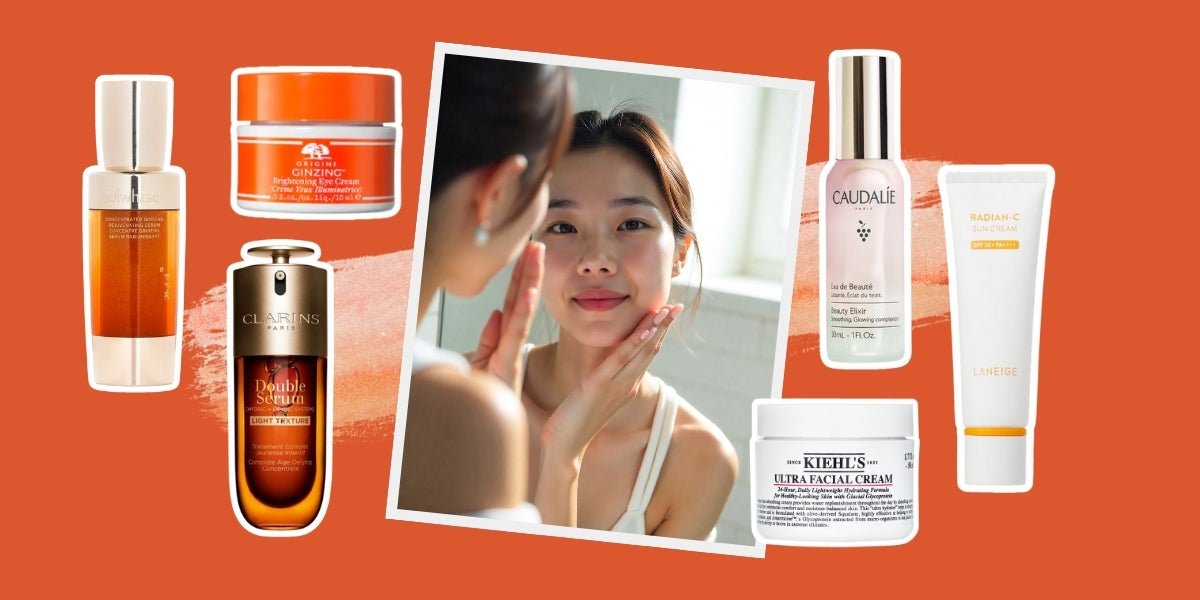
Barrier Repair 101: Reviving Skin That’s Stressed and Overworked
|
|
Time to read 4 min
|
|
Time to read 4 min
Our skin barrier works tirelessly to keep our complexion balanced, hydrated, and protected from external stressors. But like anything overworked, it can become damaged—leaving your skin feeling tight, irritated, and dull. Understanding how to properly repair your barrier is the foundation of achieving long-term skin health. In this article, we’ll explore what your skin barrier is, the signs it’s compromised, and the essential steps to bring it back to its healthiest state.
The skin barrier, also known as the stratum corneum, is the outermost layer of your skin. It’s made up of lipids (fats), ceramides, and natural moisturizing factors that form a protective wall. This “wall” keeps hydration in and harmful aggressors—like pollution, bacteria, and irritants—out. When your barrier is functioning properly, your skin appears smooth, plump, and resilient. When it’s damaged, you’ll notice dryness, flakiness, redness, or heightened sensitivity.
Your barrier doesn’t weaken overnight. It’s often a result of accumulated habits or environmental exposure. Over-exfoliation, harsh ingredients, and inconsistent skincare routines are some of the most common culprits. Even lifestyle factors like stress, lack of sleep, and overuse of active ingredients can contribute to barrier breakdown. Below is a quick look at how these factors affect your skin.
| Cause | How It Affects Your Barrier |
|---|---|
| Over-exfoliating | Strips away essential lipids and natural moisture |
| Harsh cleansers | Disrupts pH balance and causes irritation |
| Overuse of actives | Weakens skin resilience and causes redness |
| Environmental stressors | Pollution and UV exposure accelerate barrier damage |
| Lack of hydration | Leads to dryness and reduced elasticity |
When your skin barrier is compromised, the first step is to simplify. Set aside strong actives like retinol or exfoliating acids and focus on the basics—cleanse, hydrate, and protect. Stick to gentle, fragrance-free products that maintain your skin’s pH and moisture balance.
A harsh cleanser can easily worsen barrier damage. Look for sulfate-free options that don’t strip away your natural oils. Cream or gel-based cleansers with hydrating ingredients like glycerin or panthenol are ideal choices for stressed skin.
Ingredients are key in the recovery process. Some of the most effective ones include:
Ingredient |
Benefit |
|---|---|
Ceramides |
Restore the lipid barrier and strengthen skin structure |
Niacinamide |
Improves elasticity and supports moisture retention |
Fatty acids |
Replenish essential lipids lost through damage |
Panthenol (Vitamin B5) |
Soothes irritation and promotes healing |
Hyaluronic acid |
Attracts and holds moisture in the skin |
These ingredients work together to rebuild your skin’s natural defenses while improving texture and hydration levels.
Hydration is the foundation of repair. Opt for a rich, barrier-repairing moisturizer containing ceramides, cholesterol, and fatty acids. Apply it twice daily and seal in hydration while your skin heals. Avoid lightweight gels during recovery, as thicker creams provide more lasting protection.
Even while repairing your barrier, sun protection is non-negotiable. UV exposure further weakens your barrier and accelerates aging. Use a broad-spectrum SPF 30 or higher every morning, regardless of the weather or your indoor routine.
It’s tempting to use every product that promises results, but when your barrier is compromised, less is more. Cut back on high concentrations of exfoliating acids, retinoids, and vitamin C until your skin feels balanced again. Gradually reintroduce them once irritation subsides.
What you eat and drink matters. A balanced diet rich in omega-3 fatty acids, vitamins, and antioxidants supports your barrier from the inside out. Foods like salmon, avocados, almonds, and berries promote hydration and resilience. Hydrating with enough water daily also improves elasticity and radiance.
Humidity, pollution, and temperature shifts all impact your skin barrier. Use a humidifier indoors during dry seasons to maintain moisture levels, and consider using antioxidant-rich products if you live in an urban area.
Signs that your skin barrier is improving include reduced redness, less sensitivity, and a more even texture. Skin feels smoother, looks plumper, and maintains hydration longer. Recovery time varies from a few days to a few weeks depending on the damage level.
Here’s a simple step-by-step guide to follow for rebuilding your skin barrier:
| Step | Product Type | Purpose |
|---|---|---|
| 1 | Gentle cleanser | Removes impurities without stripping |
| 2 | Hydrating toner | Balances pH and boosts moisture |
| 3 | Serum with ceramides or niacinamide | Strengthens and calms the barrier |
| 4 | Rich moisturizer | Locks in hydration and restores protection |
| 5 | SPF 30+ | Shields from UV damage and environmental stress |
Repairing a damaged skin barrier isn’t about using more products—it’s about using the right ones. By simplifying your routine, choosing barrier-friendly ingredients, and maintaining consistent care, your skin can regain its natural strength and glow. Healthy skin begins with a healthy barrier, and giving it the care it deserves ensures long-term resilience and radiance.
